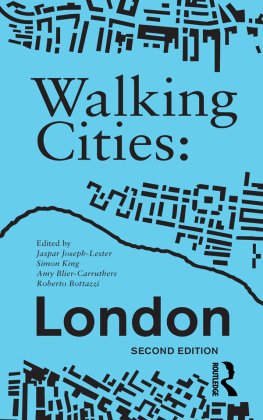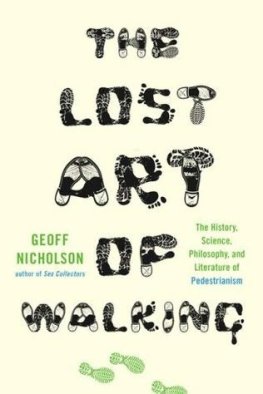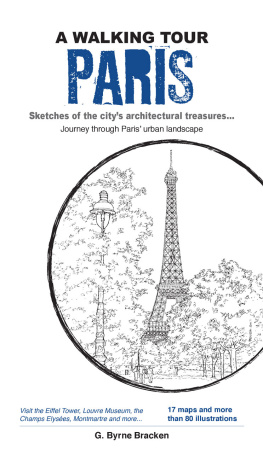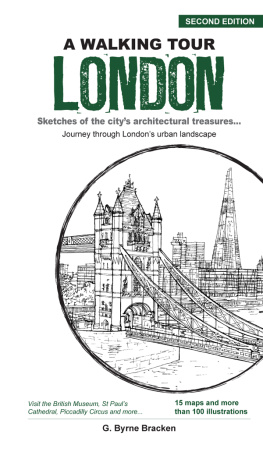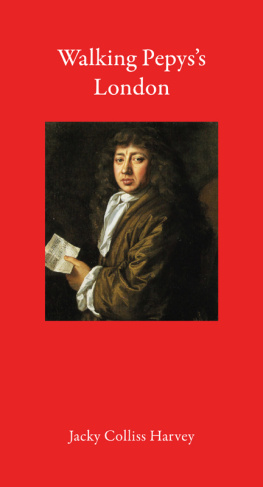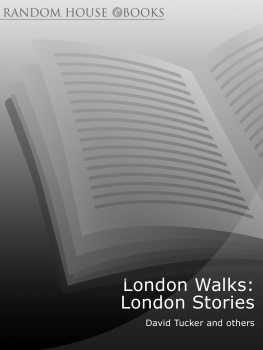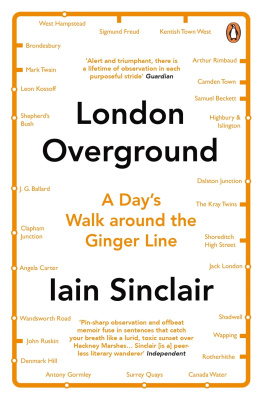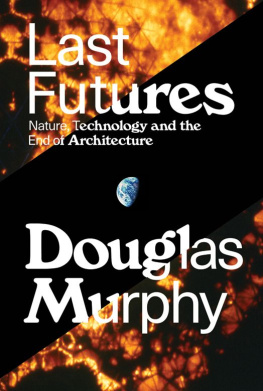We would like to thank our contributors for their involvement in Walking Cities: London. We would also like to thank the Research Office and the School of Fine Art at the Royal College of Art, under the steward-ship of Dr. Emma Wakelin and Professor Juan Cruz, The Faculty of Architecture and The Built Environment at the University of Westminster, in particular Professor Lindsay Bremner and Professor Harry Charrington and The Royal Academy of Music for their support. Samuel Jones, Flaminia Rossi and Eilis Searson at Camberwell Press have all worked beyond the call of duty to produce a beautifully designed and inspiring publication. Harriet Edwards and Irene Auerbach have provided invaluable support with proof reading and Christine Shuttleworth has helped enormously by providing us with an excellent index which has been extended for this volume. We would also like to thank the National Archive of Scotland for the generous permission to include their maps in our publication and Southwark Sunshine for permission to include images from their archive.

Walking Cities: London explores how the temporal realities revealed through urban walking can act as a method for dialogical, cognitive and empirical mapping. The meandering lines and shapes formed when we walk are traced throughout the pages of this book, in which wandering is directly associated with how we think and feel in an urban context. These walks include both real and fictional accounts of areas in and around London. There are critical interventions into the fabric of the city and along its edges, imagined urban landscapes and night walks through financial zones. Also included are mythogeographical drifts and point-to-point guides, solitary wanderings and dialogical tours. Here walking is situated as art, writing, pilgrimage and protest; walking as constituting boundaries and transgressing boundaries; walking as personal and public; walking as compliance and defiance; walking as wild, mediated and constructed; walking as interpretive, generative and embodied. Walking Cities: London speaks of how the city exists as many cities, multi-layered, constructed from a myriad of overlapping cultural, social, historical, political and economic paths.
Through bringing together a new interdisciplinary field of artists, writers, architects, musicians, human geographers and philosophers we, the editors of this book, consider how the city walk informs and triggers new processes of making, thinking, researching and communicating, in particular, how the city contains narratives, knowledge and contested materialities that are best accessed through the act of walking. At the core of this enquiry is our shared interest in walking as cognitive method: while the serendipitous and contingent events and encounters that take place during a walk are non-repeatable, it is also the case that walking can function as a tool for activating thought and unlocking knowledge. How then does the act of walking constitute a methodological practice across disciplines? What can we learn from the various ways it is employed by artists, architects, musicians, philosophers and writers? The contributors to this book bring a new range of insights and perspectives to these questions through deploying the city walk as a critical mode of enquiry.
Much of the fallacy of contemporary urbanism and how it is taught has to do with its insistence on form, on finished products, and their assumed ability to control the evolution of a city. However, the city perhaps more than ever is the result of elusive forces whose presence can only be perceived indirectly or for a limited period of time: the rapid transformations of urban landscapes under the pressure of global capital, climate change, migratory fluxes, etc. Walking through the streets of London is a powerful tool for architects to unearth how physical and immaterial forces are interwoven, a slow, forensic exercise that reveals elements of unnoticed livelihood, traces of profound mutations, and scars that will hardly heal. The mental and physical maps described through walking are pregnant with possibilities seeking broader, lateral tactics that open up unconventional approaches to design. Peter St John takes us through the roads of the North London he experiences daily to show its dynamic and incomplete nature, one that never fails to surprise the walker. He trains our eyes to appreciate Londons apparent visual background noise in which he finds a distinctive trait of the capitals urbanism. Douglas Murphys walk crosses the river stretches from Deptford to Elephant and Castle, via a series of key housing estates. The cross-section he draws through his walk is architectural as much as political: large new developments mark a re-alignment in the ideologies shaping London. The Barbican provides the stage for Adam Kaasas walk: the infamously meandering network of walkways of this vast housing complex provides a space of resistance for the urban walker. The Barbicans often-frustrating spatial intricacy is here seen as a healthy counterpoint to the prevailing idea that successful public spaces should be flowing and smooth.
In the last two walks of this first section (Site), it is the very materiality of the city, its deep and visceral qualities that take centre stage. Roberto Bottazzis walk takes us to the edges of London, to a fairly innocuous urban artefact Gravesend-Broadness weather stationwhose unusually high temperature readings have found themselves at the centre of the debate on climate change. Tangled up in even bigger and more controversial conversations on the Anthropocene, walking is here a means to survey and familiarize oneself with a strange landscape in which man-made and natural can no longer be distinguished. In the last contribution to this section, David Dernie takes us back to the very centre of London, to Tottenham Court Road. As Dernie repeatedly covers the length of this short and busy London road, he deliberately slows down his pace allowing the complex narratives, objects and materials which give meaning to the urban experience, to surface.
Increasingly produced and encountered outside the gallery, art often takes the form of interventions into urban public space intended to produce immediate and unpredictable public responses. Much of the work in this book is informed by these shifts within contemporary art. The role of walking is often directly connected to the critical and creative engagement that artists have with their changing urban environment. These first-hand encounters with the social and physical geographies of the city provide material in the form of encounter, protest, documentary, spatial narratives, actions, participation, risk, collaboration, fiction, chance and spectacle. It is here that we explore how urban walking connects disciplines and facilitates a range of processes and methods for the production of new critical modes that situate art within the context of our contemporary urban condition.
In section two, Night, we consider night walking as key to the way many artists work, think and research. Rut Blees Luxemburg and Jean-Luc Nancy take a nocturnal and circuitous journey from Shoreditch through the City of London to the soundtrack of Hans Zenders interpretation of the first lied of Schuberts Winterreise: Gute Nacht. The journey starts with a ruin the ancient columns of an abandoned city and passes the stone pillars of the Bank of England, the tents of Occupy in Finsbury Square and the construction sites of current corporate development. Nayan Kulkarni takes us on another nocturnal journey, from the heart of global capitalist quasi-public realm spaces in Canary Wharf to private and social housing developments along the pathways to Mile End Park. These architectural episodes are intercut with layers of transport infrastructure, recreational spaces and pedestrian pathways that give an insight into the role played by electric light in determining the economic and social condition of different areas of the city.

